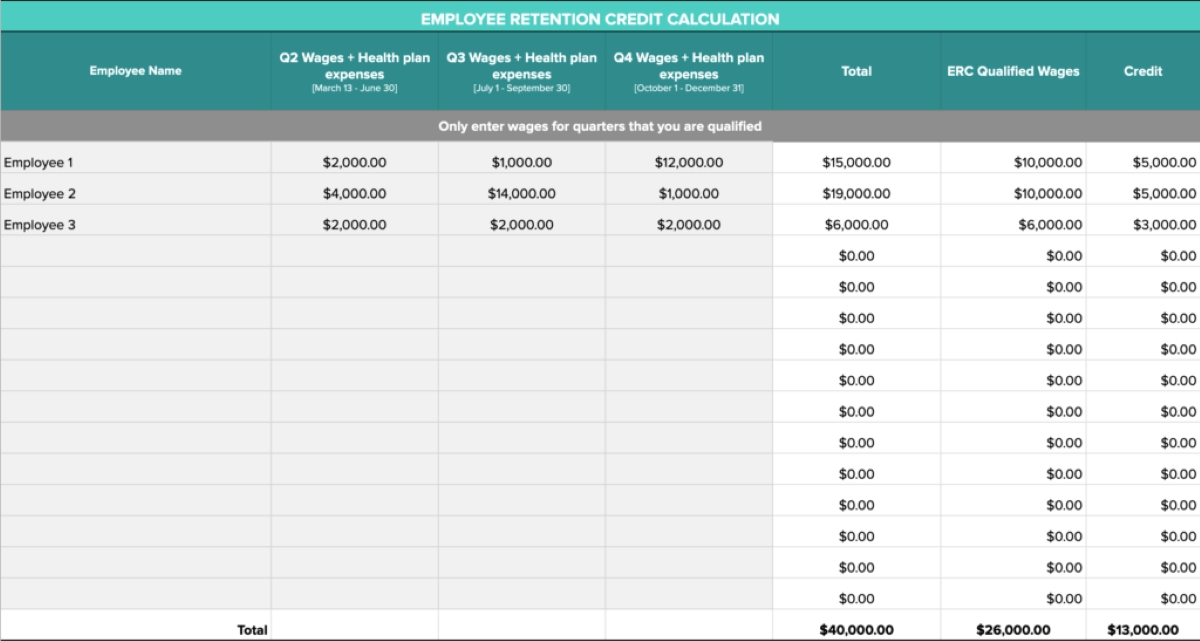Home>Finance>How Can Mergers And Acquisitions Affect Downsizing In Healthcare Organizations?


Finance
How Can Mergers And Acquisitions Affect Downsizing In Healthcare Organizations?
Published: February 24, 2024
Discover the financial impact of mergers and acquisitions on downsizing in healthcare organizations. Explore the effects on finance and strategic decision-making.
(Many of the links in this article redirect to a specific reviewed product. Your purchase of these products through affiliate links helps to generate commission for LiveWell, at no extra cost. Learn more)
Table of Contents
Introduction
Mergers and acquisitions (M&A) have become a prevalent strategy in the healthcare industry, aimed at achieving economies of scale, improving patient care, and increasing market share. However, the impact of M&A on downsizing within healthcare organizations is a topic of significant concern and interest. Downsizing, the deliberate reduction of a company's workforce, often becomes a focal point in the aftermath of M&A activity. This article aims to explore the intricate relationship between mergers, acquisitions, and downsizing in the context of healthcare organizations.
As the healthcare landscape continues to evolve, organizations are constantly seeking ways to adapt and thrive in a competitive environment. Mergers and acquisitions offer a pathway for healthcare organizations to consolidate resources, streamline operations, and expand their reach. While these strategic moves hold promise for growth and efficiency, they can also lead to workforce reductions and operational restructuring. Understanding the implications of M&A on downsizing is crucial for healthcare leaders, employees, and stakeholders alike.
The impact of downsizing in healthcare organizations post-merger is multifaceted, encompassing various factors such as workforce realignment, cultural integration, and financial optimization. By delving into these complexities, we can gain insights into the challenges and opportunities that arise when healthcare entities undergo M&A activities. Moreover, exploring strategies to mitigate the adverse effects of downsizing post-merger is essential for fostering a resilient and sustainable healthcare ecosystem.
In the subsequent sections, we will delve into the impact of mergers and acquisitions on downsizing in healthcare organizations, analyze the factors contributing to downsizing post-merger, and propose strategies to mitigate the potential negative effects. By navigating through these dimensions, we aim to provide a comprehensive understanding of the dynamics at play and offer valuable insights for healthcare leaders navigating the complexities of M&A and downsizing.
The Impact of Mergers and Acquisitions on Downsizing in Healthcare Organizations
Mergers and acquisitions have a profound impact on the workforce of healthcare organizations. The primary goal of M&A in the healthcare sector is often centered on achieving synergies, optimizing operational efficiency, and enhancing the quality of care. However, these pursuits can lead to significant downsizing within the combined entity. The impact of M&A on downsizing is influenced by various factors, including the scale of the merger, organizational culture, and the strategic objectives driving the consolidation.
One of the immediate effects of M&A on downsizing is the rationalization of duplicate functions and roles. When two healthcare organizations merge, there is often an overlap in administrative, clinical, and operational functions. As a result, redundancies are identified and addressed through workforce reduction initiatives. While this streamlining process is aimed at eliminating inefficiencies, it can also lead to workforce instability and diminished morale among employees.
Furthermore, the impact of M&A on downsizing extends beyond the sheer number of employees affected. It can disrupt the organizational culture and erode employee engagement. Healthcare professionals may experience heightened job insecurity and anxiety, which can impede their ability to deliver optimal patient care. Additionally, downsizing can strain the remaining workforce by increasing workloads and creating a sense of uncertainty about the future direction of the organization.
From a financial perspective, downsizing resulting from M&A can yield short-term cost savings. However, the long-term implications on employee retention, talent acquisition, and institutional knowledge must be carefully considered. Moreover, the reputational impact of downsizing in healthcare organizations post-merger can influence patient perception and stakeholder confidence, thus affecting the overall viability of the combined entity.
In essence, the impact of mergers and acquisitions on downsizing in healthcare organizations is a complex interplay of operational, cultural, and financial dynamics. While M&A activities present opportunities for growth and transformation, the repercussions of downsizing underscore the need for strategic planning, empathetic leadership, and proactive measures to mitigate adverse effects on the workforce and organizational well-being.
Factors Contributing to Downsizing in Healthcare Organizations Post-Merger
Several factors contribute to downsizing in healthcare organizations following a merger or acquisition, shaping the decisions and actions that lead to workforce reductions. Understanding these factors is essential for comprehending the underlying forces driving downsizing post-merger and for devising effective strategies to address its impact.
- Operational Redundancies: When healthcare organizations merge, they often encounter duplicate roles and functions across various departments, such as administration, finance, and clinical services. Identifying and rationalizing these operational redundancies becomes a primary driver for downsizing, as the combined entity seeks to eliminate inefficiencies and streamline its operations.
- Financial Pressures: Mergers and acquisitions in the healthcare sector are frequently driven by the pursuit of cost efficiencies and financial optimization. Downsizing may be a consequence of aligning the cost structure of the combined organization with the anticipated financial benefits of the merger. This can involve reducing labor costs through workforce reductions to achieve targeted savings.
- Strategic Realignment: Post-merger, healthcare organizations often undergo strategic realignment to harmonize their missions, goals, and operational strategies. As a result, certain departments or functions may be restructured or consolidated to align with the new organizational direction. This realignment can lead to downsizing as roles are redefined and redundant positions are phased out.
- Cultural Integration: The cultural integration of two distinct healthcare entities following a merger is a critical yet challenging aspect. Misalignment of organizational cultures can lead to inefficiencies and hinder the cohesive functioning of the combined organization. Downsizing may occur as part of efforts to align the workforce with the prevailing or evolving organizational culture, often resulting in the elimination of roles that do not align with the integrated culture.
These factors collectively contribute to the complexities of downsizing in healthcare organizations post-merger. While the decision to downsize is often driven by strategic and financial imperatives, the human impact and organizational repercussions necessitate a thoughtful and empathetic approach to managing workforce transitions. In the subsequent section, we will explore strategies for mitigating the effects of downsizing in healthcare organizations following mergers and acquisitions.
Strategies for Mitigating Downsizing Effects in Healthcare Organizations
Effectively mitigating the adverse effects of downsizing in healthcare organizations following mergers and acquisitions requires a proactive and holistic approach that prioritizes the well-being of the workforce, sustains operational continuity, and fosters a culture of resilience. By implementing targeted strategies, healthcare leaders can navigate the complexities of downsizing while safeguarding employee morale and organizational stability.
- Transparent Communication: Open and transparent communication is paramount in mitigating the impact of downsizing. Healthcare leaders should provide clear and timely communication regarding the rationale behind workforce changes, the support available to affected employees, and the organization’s commitment to navigating the transition with empathy and integrity.
- Employee Support Programs: Implementing comprehensive support programs for affected employees, including career counseling, skill development initiatives, and assistance in exploring internal or external job opportunities, can mitigate the emotional and professional impact of downsizing. These programs demonstrate the organization’s investment in its employees’ well-being and future prospects.
- Redeployment and Internal Mobility: Prioritizing internal redeployment and mobility initiatives can help retain valuable talent within the organization. By facilitating the transition of affected employees to vacant roles or new opportunities within the merged entity, healthcare organizations can minimize the disruptive effects of downsizing while retaining institutional knowledge and expertise.
- Reskilling and Training: Offering reskilling and training programs tailored to the evolving needs of the organization can empower employees to adapt to new roles and responsibilities. By investing in the professional development of the workforce, healthcare organizations can enhance employee resilience and mitigate the negative impact of downsizing on individual career trajectories.
- Empathetic Leadership: Cultivating empathetic leadership at all levels of the organization is instrumental in navigating downsizing with sensitivity and compassion. Leaders who demonstrate empathy, actively listen to employee concerns, and prioritize the well-being of their teams can mitigate the emotional toll of downsizing and foster a culture of trust and support.
By embracing these strategies, healthcare organizations can navigate the complexities of downsizing following mergers and acquisitions while prioritizing the welfare of their workforce. Proactive measures that address the human impact of downsizing are pivotal in sustaining employee morale, preserving organizational knowledge, and fostering a resilient and adaptive culture within the healthcare ecosystem.
Conclusion
Mergers and acquisitions in the healthcare sector have a profound impact on downsizing within organizations, necessitating a nuanced understanding of the factors at play and the implementation of strategic measures to mitigate adverse effects. The ramifications of downsizing extend beyond workforce reductions, encompassing cultural, operational, and financial dimensions that warrant careful consideration by healthcare leaders and stakeholders.
As healthcare organizations navigate the complexities of M&A activity and its implications on downsizing, transparent communication, empathetic leadership, and proactive support programs emerge as critical pillars in safeguarding the well-being of the workforce. By fostering a culture of resilience and adaptability, healthcare entities can navigate downsizing with integrity and compassion, mitigating the disruptive effects on employees and the organization as a whole.
Furthermore, strategic realignment, internal mobility initiatives, and investment in employee development can serve as catalysts for minimizing the human impact of downsizing, retaining institutional knowledge, and nurturing a cohesive and agile workforce within the integrated entity.
In conclusion, the intersection of mergers, acquisitions, and downsizing in healthcare organizations underscores the imperative of balancing strategic imperatives with a human-centric approach. By prioritizing the welfare of employees, fostering transparent communication, and embracing proactive measures, healthcare leaders can navigate the complexities of downsizing post-merger while cultivating a resilient and empowered workforce poised for sustainable success in the evolving healthcare landscape.














